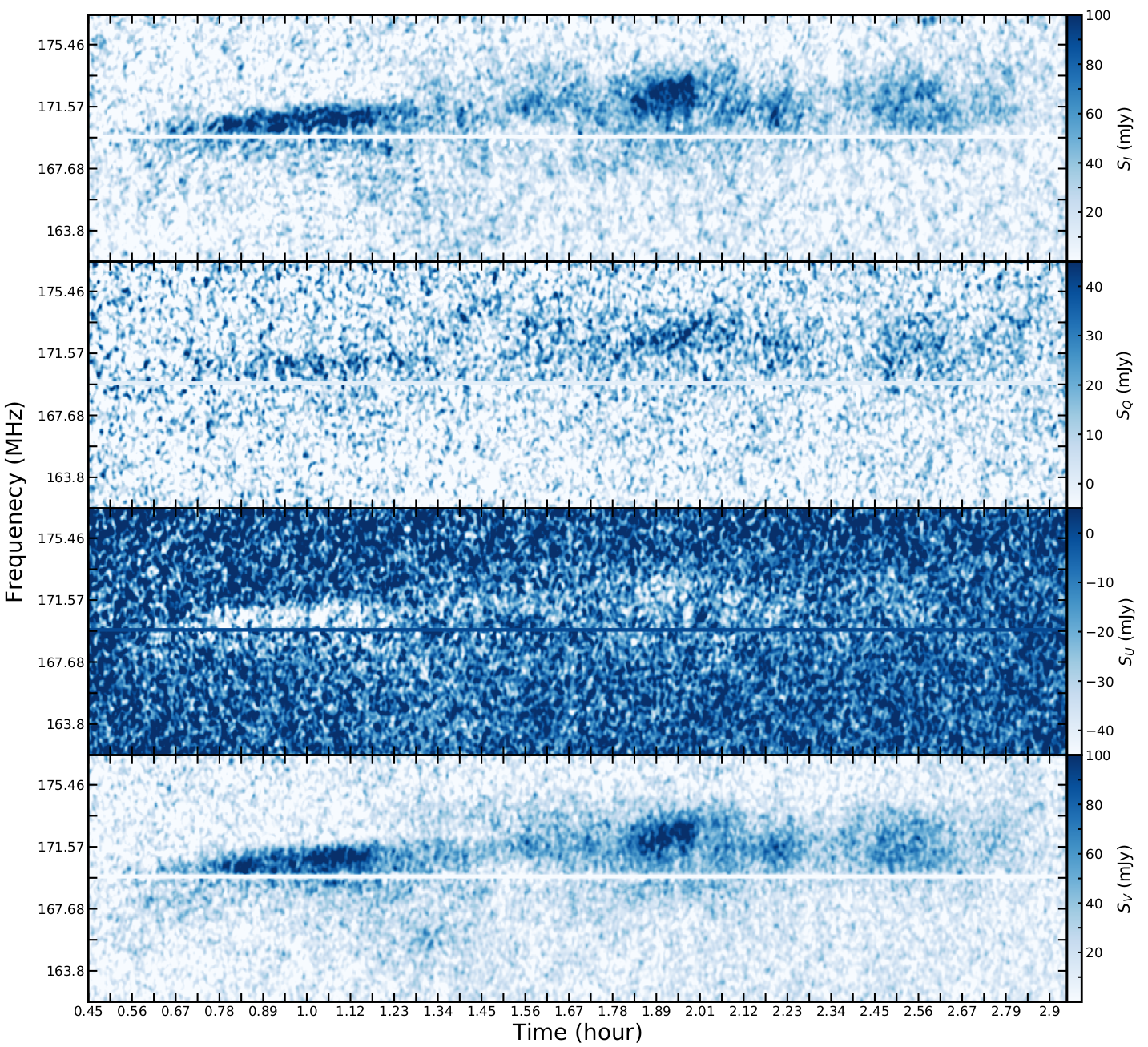Daily Image
23-02-2021Low-frequency monitoring of flare star binary CR Draconis: Long-term electron-cyclotron maser emission
| Submitter: | Joseph Callingham |
| Description: | Recently detected coherent low-frequency radio emission from M dwarf systems (the smallest and most abundant stars in our Galaxy) shares similarities with emission produced by magnetospheric processes from the gas giant planets of our Solar System. By serendipity, the LOFAR deep-fields contains one of the radio-bright stars we detected in LoTSS - CR Draconis. This provides us with over 6.5 days of data to observe how the low-frequency emission evolves and search for any periodic signal in the radio emission. We detect three bright radio bursts from CR Draconis, revealing the brightest (seen in the attached picture) is elliptically polarised, confined to 4 MHz of bandwidth and reaches a flux density of 205 mJy! The burst structure is mottled, indicating it consists of unresolved sub-bursts. Such a structure shares a striking resemblance with the low-frequency emission from Jupiter. We suggest the near-constant detection of high brightness temperature, highly-circularly-polarised radiation from CR Draconis implies the emission is produced via the electron-cyclotron maser instability. We do not detect any periodicity but our sampling would hide the rotation period of the star. We have more data coming this cycle to further test if we see any radio periodicity. The recently accepted paper (that will be part of the LOFAR deep field paper splash) can be found here: https://arxiv.org/abs/2102.04751 |
| Copyright: | Callingham et al. (2021) |
| Tweet |  |
